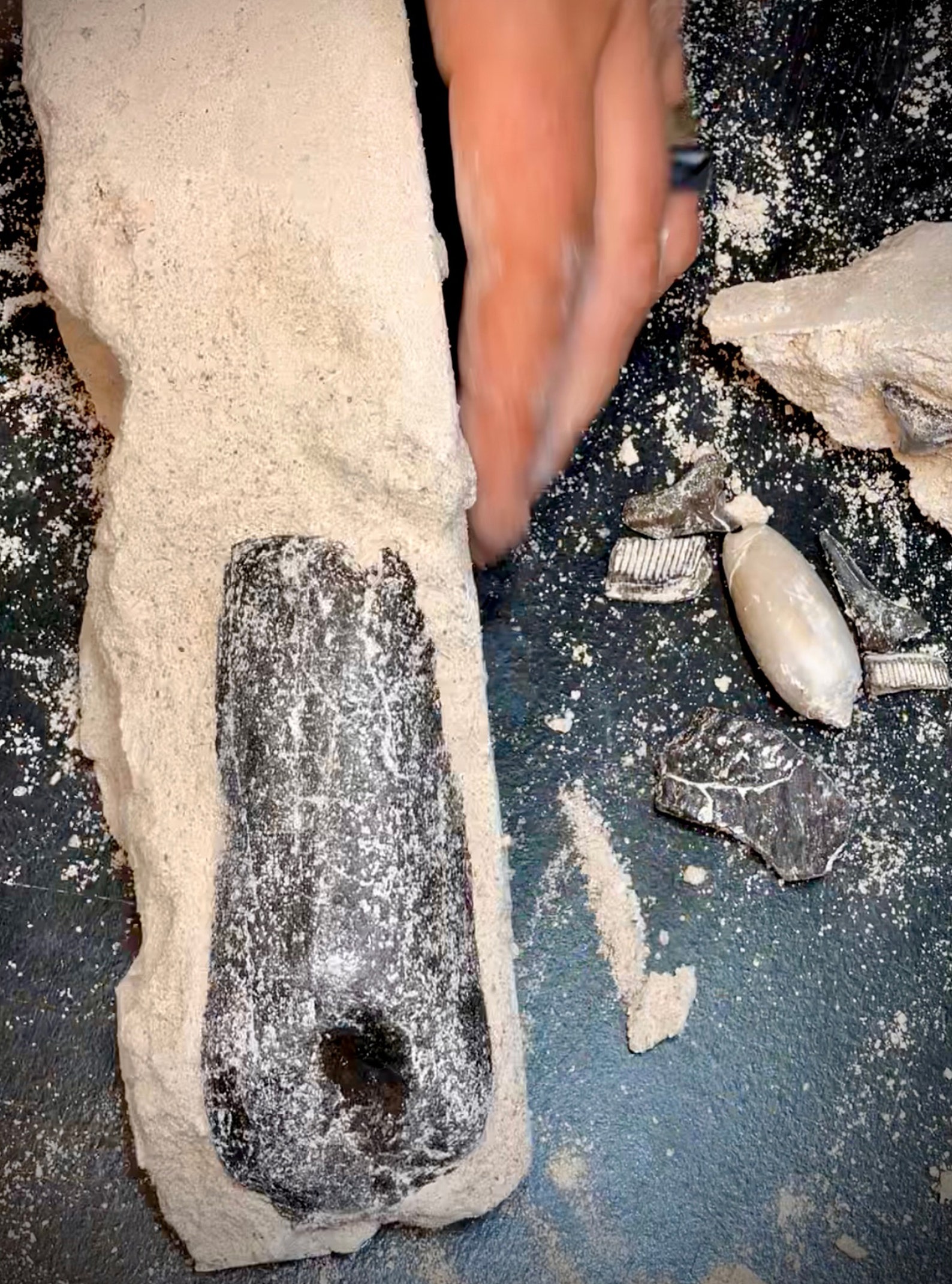
Jason, Jake, and the rest of the crew did a wonderful job hosting the jam. The event was run very well and the site couldn't have been better. The best one is a beautiful complete ~3" carmel colored Asaphiscus wheeleri specimen. However, we still ended up with eight complete ones (minus the dozen or so agnostids and some tiny Elrathia). Most of them turned out to be cheekless, headless, or crushed. We ended up brining home two boxes of specimens. We learned later that we carried way more back to the camp than what actually turned out to be great specimens. As novices here, we were unable to tell which specimens would be complete when prepped. Since this was our first time in this type of fossil shale, we mainly stayed in quarries that had the more common trilobites. Then in the evening we headed to a spring a few miles away to wash up. We picked one for in the morning, took a short rest, food, and water break in the extreme heat of the day, then headed to one or two more in the late afternoon. The Marjum formation has some rare, beautiful, and large trilobite fossils! These include Modocia sp., Bathyuriscus fimbriatus, the 5" Hemirhodon amplipyge, and the prized 6" Olenoides superbus with its incredible axial spines!Įach day, we picked a couple different quarries to collect at. The wheeler shale produces bugs that range in colors from black and orange to a beautiful red! Besides trilobites, there is an echinoderm called a Gogia spiralis that looks like a water hydra with little plates all over it. Other trilobites include Asaphiscus wheeleri, small agnostid trilobites such as Peronopsis, and the rare Olenoides nevadensis with cool axial spines. The Wheeler shale supplies the world with Elrathia kingii trilobites, probably the most well known trilobite on earth. The Wheeler and Marjum formations at the House Range are world renowned. They have numerous small quarries dotting the property exposing the two Cambrian formations. Their property in the House Range contains the Wheeler and Marjum formations. The American Trilobite Suppliers generously host a 4 day "Trilobite Jam" at one of their properties in Utah. Tomorrow would be a busy day of digging, as this was the 2nd Trilobite Jam and we were camping in the House Range of Utah, a world famous trilobite locality. Leisurely, as the night went on, one by one, people retired to their tents and campers that were haphazardly scattered around the "base camp."Īfter Amy and I had downed a bottle of wine around the fire and finished marveling at Van Gogh's "Starry Night," painted overhead, we too returned to our tent, planning the next day's events. Eventually, when everyone had their fill of scorpions, they returned to the campfire. "Look, he's in his attack position." After marveling for a moment, the two groups separated, looking for more critters. Evading the prickly flora, the two groups quickly came together encircling a neon green scorpion. "There's one!" shouted someone from one of the groups. Armed with UV lights, two small groups slowly crept through the desert. The silence was deafening, save for an occasional "rattle" from a nearby dead rattlesnake blowing in the wind. The darkness was deep, as civilization was far beyond the horizon. The night air was cool and crisp, quite contrary to the day. The tiny white dot near the horizon is base camp

Got questions? Contact us here.The road leading to the Wheeler Quarry. Our mission is to promote the hands on study of natural sciences. Penn Dixie is operated by the Hamburg Natural History Society, Inc., a 501(c)(3) nonprofit organization. Program proceeds - including tax-deductible donations - support the conservation of our site, upkeep of facilities, and educational staffing. Major funding is provided by Erie County, the Town of Hamburg, and our community supporters. What to bring? Read our Frequent Questions. Our visitors can collect and keep Devonian Period fossils including trilobites, brachiopods, crinoids, and more! Ready to dig? Check our Hours & Rates. Penn Dixie Fossil Park & Nature Reserve is a 54-acre park located the site of a former cement quarry in Hamburg, NY. We are thankful to be recognized as an economic, scientific, cultural, and conservation gem. Thanks to 905 fossil diggers who participated, Penn Dixie is now the inaugural record holder for this category! We are also tremendously proud for Penn Dixie to be honored as one of the first members of New York State’s new geological trail.

In 2018, Penn Dixie claimed the Guinness World Records™ title for the World’s Largest Fossil Dig. Penn Dixie - a global geological treasure - is ranked as the #1 fossil park in the U.S.


 0 kommentar(er)
0 kommentar(er)
